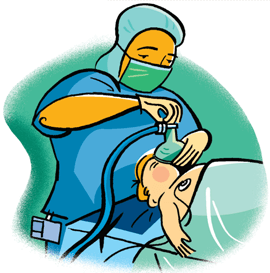Understanding Sedation and General Anesthesia in Dentistry : Ensuring Comfortable Dental Experiences
Dental visits can be anxiety-inducing for some individuals, making it challenging to receive necessary treatments. Fortunately, advancements in dentistry have led to the availability of sedation and general anesthesia options, ensuring a comfortable experience for patients. In this blog post, we will explore the different levels of sedation and general anesthesia commonly used in dentistry, their benefits, considerations, and the importance of communication between patients and dental professionals.
- Levels of Sedation: Sedation in dentistry is administered to induce relaxation and ease anxiety during dental procedures. There are different levels of sedation available, including:
a. Minimal Sedation: Also known as "laughing gas" or nitrous oxide, this level of sedation creates a light, relaxed state while allowing patients to remain conscious and responsive throughout the procedure.
b. Moderate Sedation: Administered through oral medication or intravenous (IV) sedation, moderate sedation induces a deeper state of relaxation, often resulting in partial memory loss of the procedure. Patients can still respond to verbal cues but experience minimal discomfort.
c. Deep Sedation: Deep sedation brings patients to the edge of unconsciousness, enabling them to remain unaware of the procedure. It is typically administered intravenously and requires close monitoring by trained professionals.
- General Anesthesia:
General anesthesia is reserved for complex dental procedures or patients with severe dental anxiety or special needs. It involves complete unconsciousness, ensuring patients feel no pain or have any memory of the procedure. General anesthesia is administered by an anesthesiologist, who monitors the patient's vital signs throughout the treatment.
Benefits and Considerations:
- Enhanced comfort: Sedation and general anesthesia help patients relax, alleviate anxiety, and minimize discomfort during dental procedures.
- Time efficiency: With sedation, multiple treatments can often be performed in a single visit, saving patients both time and effort.
- Safety measures: Dental professionals closely monitor patients throughout sedation or general anesthesia, ensuring their safety and well-being.
- Precautions and eligibility: Patients may require a thorough medical evaluation to determine their suitability for sedation or general anesthesia. Dental professionals will review medical history, current medications, and any pre-existing conditions.
Communication and Patient Education: Open communication between patients and dental professionals is crucial to ensuring the safe and effective use of sedation and general anesthesia. Patients should disclose their concerns, anxieties, and medical history, while dental professionals must provide detailed information about the procedure, risks, and aftercare instructions.
Conclusion: Sedation and general anesthesia play vital roles in providing comfortable dental experiences for patients with dental anxiety, complex procedures, or special needs. Through advancements in sedation techniques, dental professionals can create a calm and relaxing environment, improving the overall dental care experience. By fostering open communication and addressing patient concerns, dental professionals can tailor treatment plans and ensure optimal outcomes.
Remember, every patient's situation is unique, and the suitability of sedation or general anesthesia should be discussed with a qualified dental professional. Your dental team is dedicated to providing safe and comfortable care, guiding you through your dental journey with compassion and expertise. - Berkay Öksüz Patient Coordinator

Yorumlar
Yorum Gönder